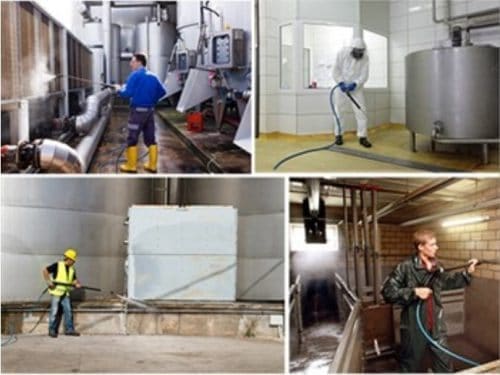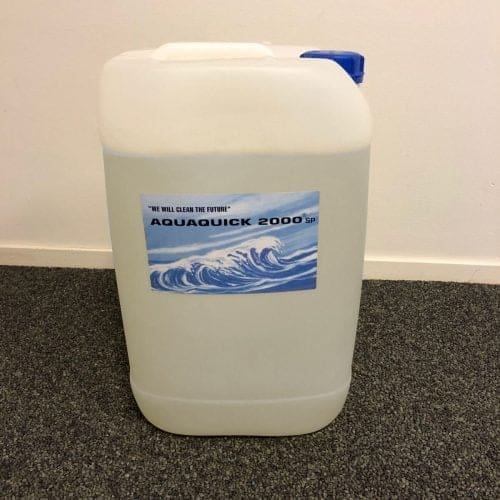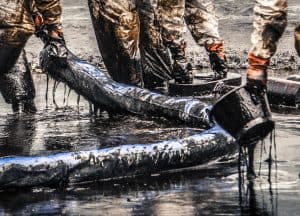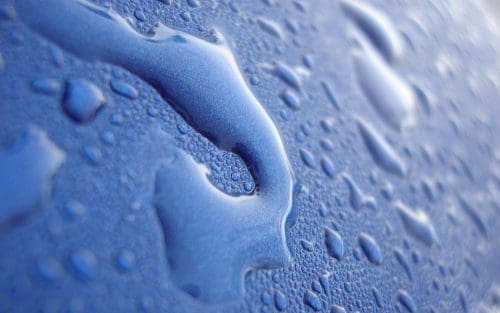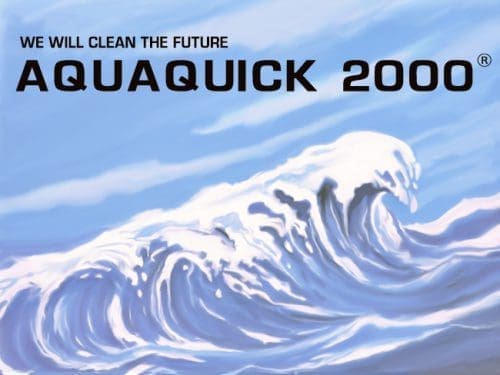Maintaining industrial pipes is essential for efficient operation and longevity. Over time, pipes accumulate debris, grease, scale, and other contaminants that can impede performance and lead to costly repairs or replacements. Proper cleaning ensures the removal of these deposits, safeguarding against corrosion, clogging, and other issues. This article explores how to clean a pipe effectively, focusing on industrial pipes, and introduces the environmentally friendly solution, AQUAQUICK 2000, for optimal results.
Importance of Cleaning Industrial Pipes
Preventing Operational Issues
Industrial pipes are vital components of any system, transporting fluids like chemicals, water, or oil. Over time, these pipes accumulate debris such as rust, scale, and grease. These deposits can obstruct the flow of materials, reduce efficiency, and increase energy consumption. Furthermore, clogged pipes can lead to pressure build-ups, which may damage equipment or cause hazardous leaks. Cleaning industrial pipes regularly not only maintains operational efficiency but also prevents costly downtime caused by malfunctions.
Ensuring Longevity
Corrosion and material degradation are common issues in uncleaned pipes. Deposits like rust and scale can accelerate wear and tear, reducing the pipe’s lifespan. Regular cleaning removes these corrosive elements, preserving the integrity of the pipe walls. This maintenance reduces the likelihood of failures such as leaks, cracks, or bursts, which are expensive to repair and can disrupt operations. By investing in pipe cleaning, industries ensure the durability and reliability of their infrastructure for years to come.
Methods of Cleaning Industrial Pipes
There are several methods to clean industrial pipes, each tailored to specific types of contaminants and applications. Below are the most effective techniques for how to clean a pipe in industrial settings:
1. Chemical Cleaning
Chemical cleaning is one of the most efficient ways to clean industrial pipes. It involves using cleaning agents designed to dissolve or loosen deposits such as grease, rust, and scale. This method is highly effective for internal cleaning, especially in pipes with complex geometries or narrow sections. Cleaning agents are circulated through the pipe system, breaking down contaminants for easy removal.
Steps in Chemical Cleaning:
- Prepare a cleaning solution based on the contaminants present.
- Close the system to ensure proper circulation of the solution.
- Rinse thoroughly to remove any residues and neutralize the cleaning agents.
Chemical cleaning minimizes physical labor, making it ideal for large-scale industrial systems. It is particularly useful when dealing with persistent contaminants that are difficult to remove with mechanical methods.
2. Degreasing
Degreasing is a specialized form of chemical cleaning aimed at removing grease, oil, and hydrocarbons. These contaminants can significantly hinder a pipe’s performance and are often resistant to water-based cleaning alone. The process involves using hot water combined with detergents or solvents to break down the grease effectively.
Common Procedure:
- Begin by circulating a hot detergent solution through the pipes.
- For stubborn grease deposits, use a solvent-based cleaner.
- Rinse thoroughly to remove loosened contaminants and residues.
AQUAQUICK 2000 is a superior degreasing solution, offering an eco-friendly alternative to traditional methods. Its powerful formula ensures efficient removal of grease without harming the environment or posing risks to users.
3. Mechanical Cleaning
Mechanical cleaning uses tools like brushes, scrapers, or pigs to physically remove debris and contaminants. This method is particularly effective for removing large solid deposits or cleaning pipes with hard-to-dissolve materials.
Types of Mechanical Cleaning:
- Pigging: A cleaning device, known as a “pig,” is inserted into the pipe and pushed through to scrape off deposits.
- Rotary Brushes: Brushes attached to rotating rods or cables are used to scrub the pipe walls.
Mechanical cleaning is a straightforward method, but it requires more effort and is best suited for accessible and larger-diameter pipes. It is often combined with other techniques for comprehensive cleaning.
4. Hydro Jetting
Hydro jetting is a highly effective, non-invasive method that uses high-pressure water jets to clean pipes. It is particularly useful for removing tough blockages, scale, and grease.
Steps in Hydro Jetting:
- Insert a specialized nozzle into the pipe.
- Use high-pressure water jets to blast away deposits and contaminants.
- Adjust the water pressure to match the pipe’s material and the type of deposit.
Hydro jetting is eco-friendly and ensures thorough cleaning without the use of chemicals. However, it requires skilled operators and specialized equipment, making it suitable for large-scale operations.
Step-by-Step Guide on How to Clean a Pipe

Let’s find out how to clean a pipe below.
Step 1: Assess the Cleaning Requirement
Begin by inspecting the pipes to determine the type and severity of contamination. Identify the materials being transported, as some deposits like hydrocarbons or scale may require specific cleaning methods. An inspection will also reveal potential problem areas, such as narrow sections or bends, that may need special attention. This step is crucial to ensure the cleaning process is both effective and efficient.
Step 2: Prepare the Cleaning Setup
Once the cleaning method is chosen, gather the necessary tools and cleaning agents. For chemical cleaning, ensure you have the right solutions and equipment to circulate them. For mechanical cleaning, ensure that the tools, like brushes or pigs, are the correct size for the pipe. Preparing the cleaning setup also involves sealing the system to prevent leaks and ensuring safety protocols are followed.
Step 3: Apply the Cleaning Method
Execute the chosen cleaning method based on the type of contaminants. For example, if using chemical cleaning, circulate the solution for the recommended time to break down deposits. If using hydro jetting, adjust the water pressure to ensure effective removal without damaging the pipe. The process should be monitored to address any issues that arise during cleaning.
Step 4: Rinse Thoroughly
After cleaning, flush the pipes with clean water to remove any residual cleaning agents and loosened debris. This step is essential to prevent residues from affecting the pipe’s performance. For systems using chemical cleaners, a neutralizing agent may be required to ensure no harmful chemicals remain.
Step 5: Inspect the Results
Conduct a final inspection using tools like cameras or gauges to ensure the cleaning process was successful. Look for any remaining deposits or potential damage to the pipe. This ensures the system is ready to resume operation without issues.
Advantages of Using AQUAQUICK 2000
When it comes to how to clean a pipe, using the right cleaning product is essential. AQUAQUICK 2000 stands out as an eco-friendly, water-based cleaning solution designed for industrial applications.
Key Features:
- Eco-Friendly: AQUAQUICK 2000 is free from harmful chemicals, making it safe for users and the environment.
- Effective Degreasing: It dissolves grease, hydrocarbons, and other tough contaminants effectively.
- Versatile Applications: From industrial pipes to tools and equipment, AQUAQUICK 2000 is suitable for various cleaning tasks.
Why Choose AQUAQUICK 2000?
Traditional chemical cleaners can be harsh, causing damage to pipes and posing risks to users. AQUAQUICK 2000 offers a gentle yet powerful cleaning action, ensuring effective results with minimal effort. By combining this water-based formula with simple tools like wipes, sponges, or brushes, users can achieve superior cleaning performance. For industries prioritizing sustainability and efficiency, AQUAQUICK 2000 is an excellent choice.

Tips for Maintaining Clean Pipes
1. Regular Inspection
Frequent inspections help identify early signs of buildup or damage, allowing timely intervention. Use tools like cameras or ultrasonic devices to assess the pipe’s condition without dismantling the system. Regular inspections can save time and money by preventing severe issues.
2. Preventive Maintenance
Adopt preventive measures such as regular flushing or light cleaning to reduce the frequency of intensive cleaning. Preventive maintenance keeps pipes in good condition, minimizing downtime and extending their lifespan.
3. Use High-Quality Cleaning Products
Investing in reliable cleaning products like AQUAQUICK 2000 ensures effective cleaning while protecting the environment. High-quality products also reduce the need for repeated cleaning, saving time and resources.
4. Train Personnel
Ensure that staff handling pipe cleaning are well-trained in the proper techniques and safety protocols. Skilled personnel can execute the cleaning process efficiently, reducing risks and ensuring thorough results.
Common Challenges in Pipe Cleaning
Challenge 1: Access to Hard-to-Reach Areas
Some pipes have complex layouts, including bends and narrow sections, making them difficult to clean. These areas often accumulate the most deposits, posing challenges during cleaning.
Solution: Flexible tools like rotary brushes or specialized hydro jetting nozzles can help clean hard-to-reach areas effectively.
Challenge 2: Residual Cleaning Agent
If cleaning agents are not rinsed thoroughly, they can leave residues that affect pipe performance or interact negatively with transported materials.
Solution: Always perform a thorough rinse and use neutralizing agents if necessary to eliminate residues.
Challenge 3: Environmental Impact
Harsh chemical cleaners can pose environmental risks and may not comply with industry regulations.
Solution: Opt for eco-friendly cleaning solutions like AQUAQUICK 2000 to ensure compliance and reduce environmental impact.
Conclusion
Maintaining clean industrial pipes is essential for ensuring operational efficiency, safety, and durability. By understanding how to clean a pipe, industries can implement effective cleaning practices that prevent costly repairs and downtime. Among the available cleaning methods, chemical cleaning, degreasing, and hydro jetting stand out for their efficiency.
AQUAQUICK 2000 offers a superior, environmentally friendly solution for cleaning industrial pipes. Its powerful degreasing properties, combined with its safety



